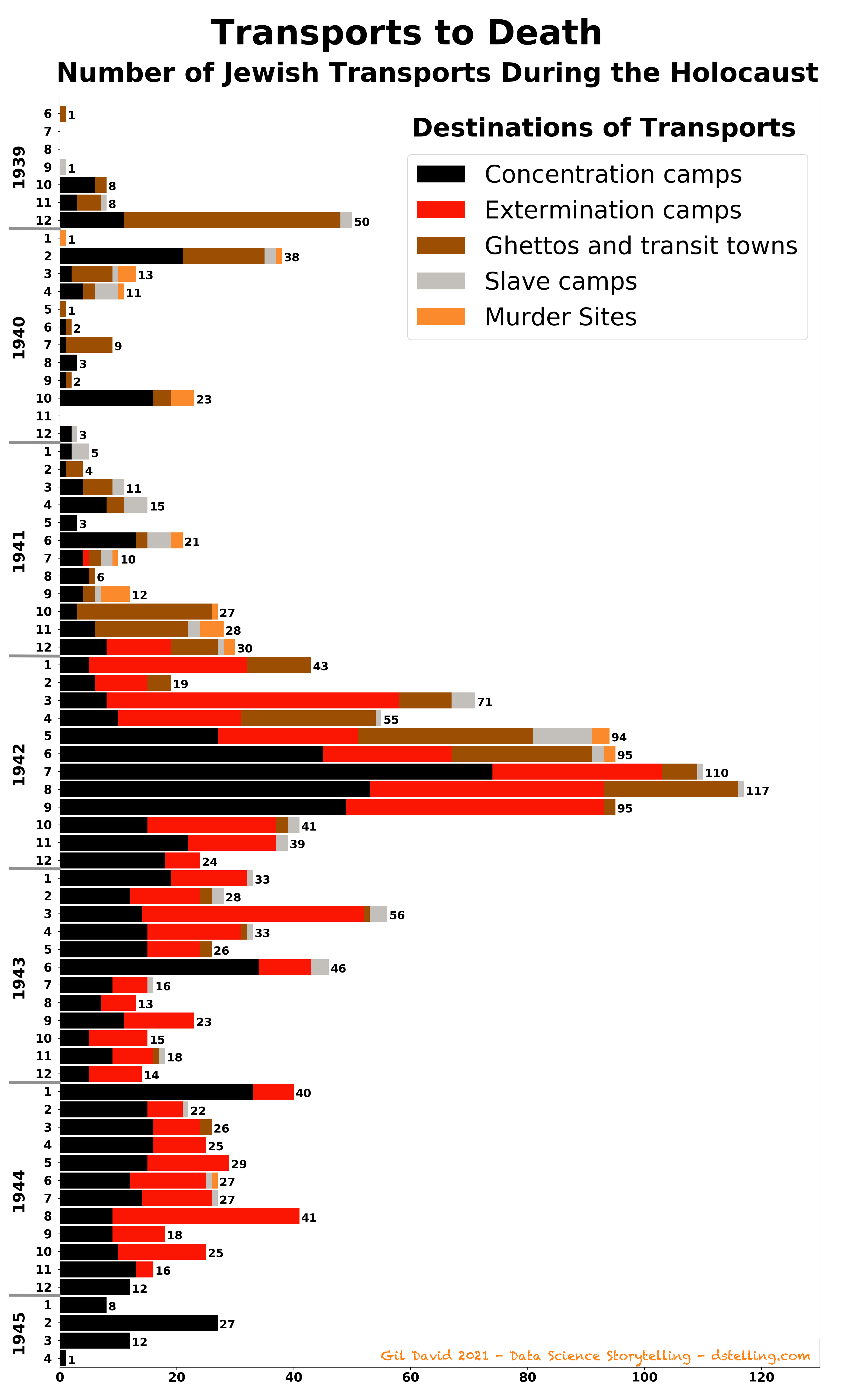On the eve of World War II, about 55,000 Jews lived in Thessaloniki, Greece. In March 1943, the Germans began implementing the extermination plan of the Jewish community in Thessaloniki, when the first transport departed to Auschwitz extermination camp
About 2,800 Jews were loaded into 40 crowded cattle cars, run by the Greek State Railways. In each car, which was intended for 8 horses, about 80 men and women, old, children and infants were crammed. The five days of the arduous journey ended in Auschwitz gates when the deportees were welcomed by dogs and guards who beat them mercilessly. Most of the deportees were immediately transported to the gas chambers, where they were murdered and their bodies were burned.
In less than five months, the Thessaloniki community was almost completely destroyed, when the cattle trains that led the 19th transport in August 1943 arrived to Auschwitz-Birkenau
During the Second World War, European Jews were sent to extermination by about 4,000 transports. The deportation of the Jews from their homes was carried out in different ways: by foot, horse-drawn carriages, freight ships, trucks and trains
The Yad Vashem website presents detailed information about 2,000 transports whose details were collected and reconstructed by institute researchers in the last 15 years. The number of Jews deported in any transport varied, and it ranged between individual people to the thousands. For example, in May 1943, the 17th transport from Thessaloniki departed to Auschwitz, where 4,500 Jews were transported to the gas chambers. In April 1944, a transport of 14 Hungarian Jews from a transit camp in Belgium departed to Bergen-Belsen concentration camp
In this post, I've analyzed the Yad Vashem's transportations database, and from which I've calculated the number of monthly transports during World War II (presented by the types of destinations). It can be seen that the peak of the transports was between March 1942 and the end of 1943. In these months, Operation Reinhard, which was the codename given to the Jewish extermination plan, was executed by the Nazis. More than 1,500,000 Jews were expelled from Poland and other European countries to the death camps in Belzec, Sobibor and Treblinka, where they were taken into the gas chamber, locked in, and killed with Zyklon B gas
The main challenge in the data analysis was to understand the type of each transport destination – whether it was a labor camp, or a ghetto, an extermination camp or a murder site, a transit town or a concentration camp. Out of 250 destinations in the transports database, the type of only a few of them was given
In order to classify any destination as one of the types, I've used natural language processing and machine learning algorithms to understand from various sources on the Internet the context in which the destination appears, and then to conclude its type.
For example, one of the destinations was the Konin camp in Poland, but its type wasn’t specified in the database. In the first phase, the algorithm searched the name of the camp on the Internet, which resulted with many pages. In the second phase, the algorithm learned the various contexts in which the camp's name appears in search results with relevance to the Second World War. Finally, the algorithm managed to conclude that the most common context associated with Konin camp, which relates to the Jewish Holocaust, was as a slave camp


I found this post very interesting and meticulously done.
There is much relevance of the subject today and it gives a better picture of how and when the trasports took place.
A good idea whould be to publish the post in more placesin order to raise awarness on the subject, and to contribute you on your hard work.